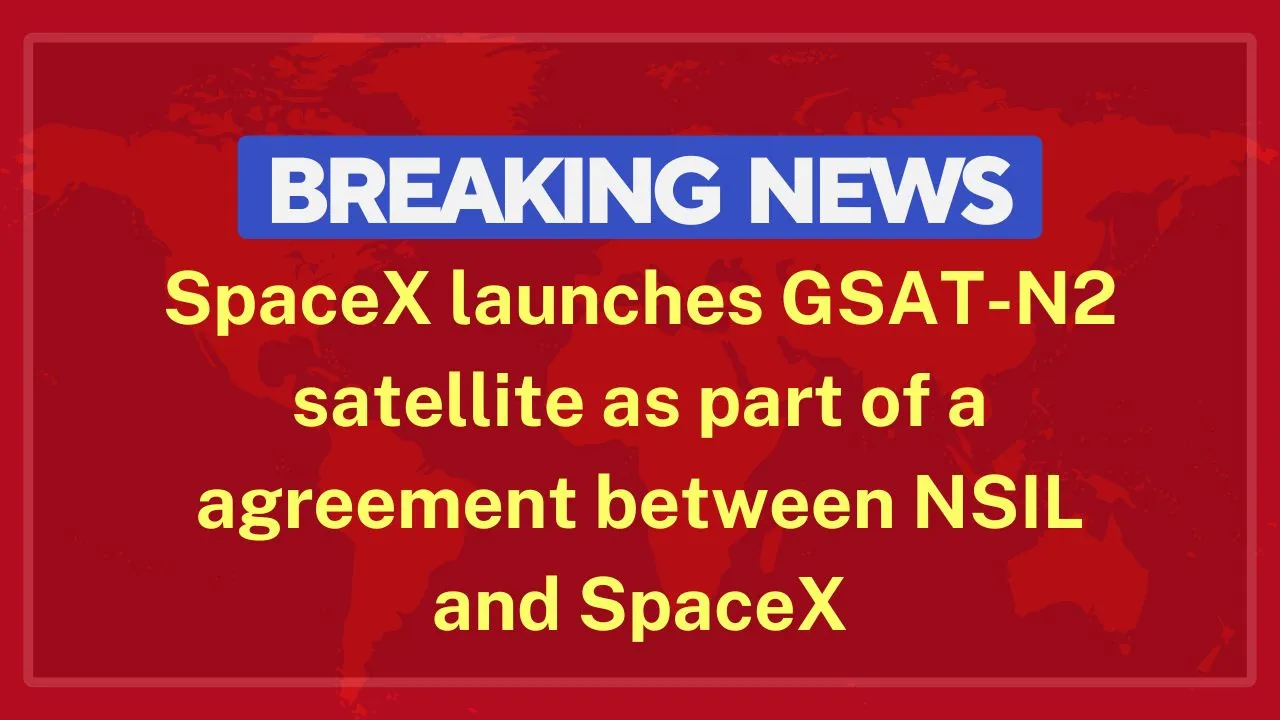| Summary |
|
SpaceX successfully launched the GSAT-N2 communication satellite, also known as GSAT-20, from Cape Canaveral Space Force Station in Florida on November 19, 2024, at 12:01 AM IST, reported the Hindustan Times. The launch marks a major collaboration between SpaceX and the Indian Space Research Organisation (ISRO) through its commercial arm, NewSpace India Limited (NSIL). The satellite was placed into orbit 34 minutes after liftoff.
The GSAT-N2 satellite, weighing around 4,700 kg, was deployed aboard a Falcon 9 rocket into a Geosynchronous Transfer Orbit (GTO). Operational control has been transferred to ISRO’s Master Control Facility (MCF). The satellite aims to enhance India’s communication infrastructure, especially in remote and underserved regions.
GSAT-N2 is designed to provide high-throughput communication across India, operating in the Ka-band for faster and more reliable data transmission. It features 32 user beams, including eight narrow spot beams for the Northeast and 24 wide beams for the rest of the country.
With a throughput of around 48 Gbps, it improves broadband access and enables in-flight internet connectivity for commercial airlines. The satellite has an expected operational lifespan of approximately 14 years.
Technically, GSAT-N2 uses a multi-beam architecture to maximize frequency reuse and overall throughput. It carries three 2.5-meter parabolic deployable reflectors, a bipropellant chemical propulsion system for orbital adjustments, and sensors such as Sun and Earth sensors to maintain precise attitude control.
The launch represents a significant milestone for India’s space partnerships, signaling a shift from traditional reliance on providers like Arianespace to international commercial firms. Union Minister Jitendra Singh highlighted the potential for this collaboration to improve internet service delivery nationwide.
In summary, the successful deployment of GSAT-N2 not only strengthens India’s communication capabilities but also sets the stage for future international collaborations in space technology, meeting the growing demand for high-speed connectivity across the country.

